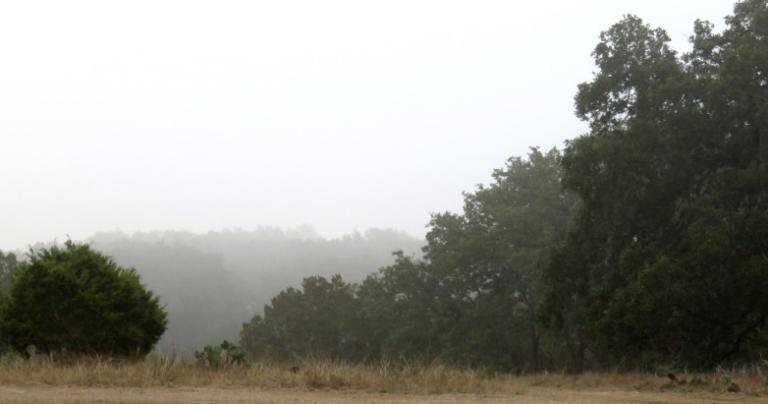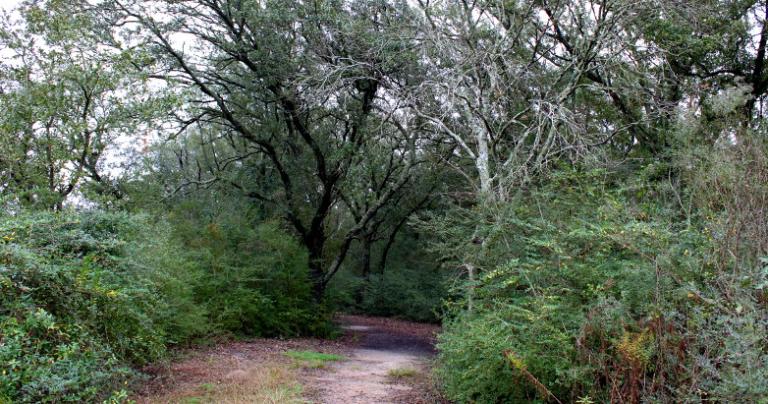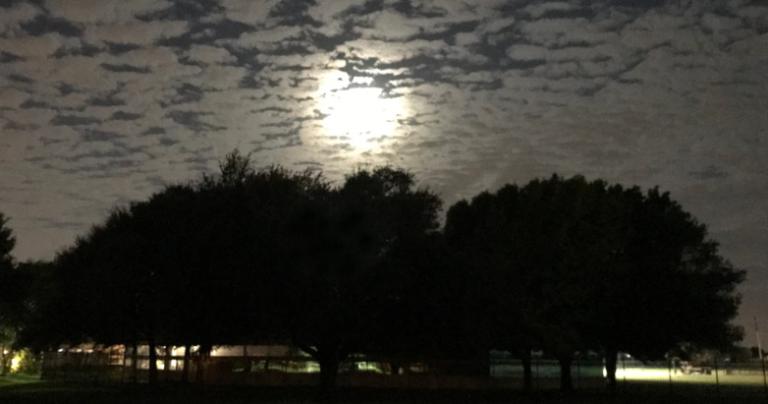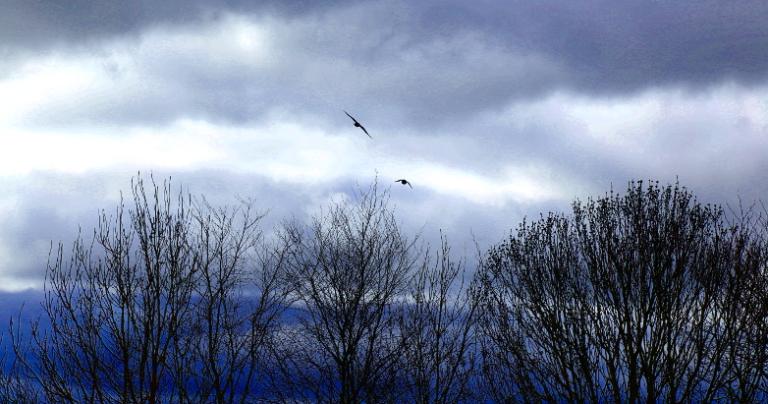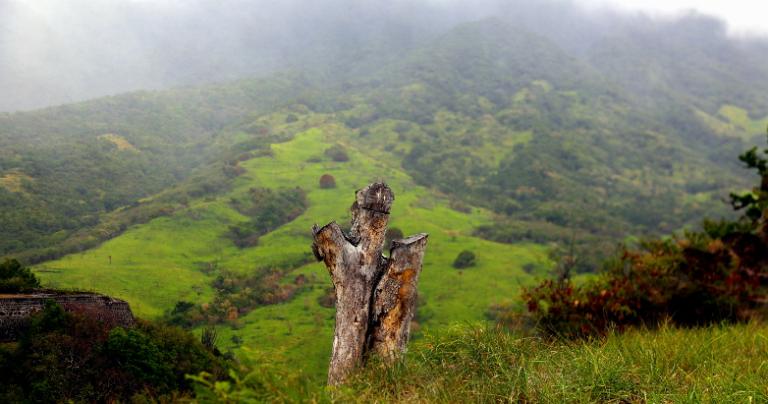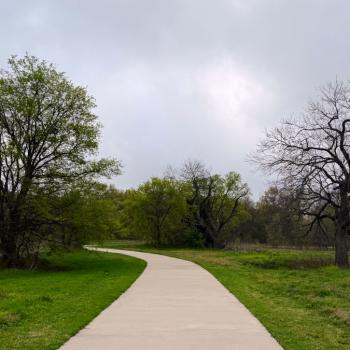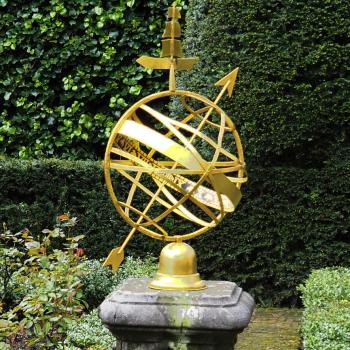Over the past couple weeks I’ve had multiple requests for information on journeying. I may have planted the seeds for those requests with September’s post Travel Is Good For the Soul – Including Travel Beyond the Veil where I discussed the benefits of journeying, but not how to do it.
I’ve been very reluctant to write on this in any detail. Journeying is best learned face-to-face. It’s not risk-free, you can do it wrong, and you can end up in some places you don’t want to be with some persons who aren’t particularly nice. The topic is also subject to derision and ridicule by skeptics, which makes it that much more difficult for those attempting to learn it. But multiple requests are usually a sign it’s time for me to write about something, so here goes.
Warning: this post is intended for people who are interested in journeying as a spiritual and magical activity. If that’s not you, you shouldn’t comment on this post. I will be extremely liberal with the delete button. But if you have honest questions or something helpful to add, I welcome your thoughts.
Foundational assumptions: animism, polytheism, experiences
A lot of people approach journeying from a psychological viewpoint. There can be value in that approach, but too often that’s an excuse to cling to materialist assumptions. And in any case, I’m a Druid and a priest, not a psychologist.
As with all my religious and spiritual work, my thoughts on journeying are grounded in animism: the idea that everything in the universe is not a thing but a person, and that we can relate to them as persons. My thoughts are grounded in polytheism: there are many real Gods whose existence and agency are not dependent on humans. This includes the existence of other spiritual beings who are not Gods, such as ancestors, nature spirits, and the fae.
Perhaps most importantly, my thoughts are based on my own experiences. This is what I’ve done. This is what works for me, and what I’ve seen work for others. How it works is a worthy question, but it’s less important to me than the fact that it does work.
What is journeying?
Journeying is the first-hand experience of other times, other places, and other realms. That’s a rather vague definition, but it’s the best I’ve got (another reason why this is best taught in-person).
It’s similar to dreaming, remote viewing, and out of body experiences, but it’s not any of those things. It can be directed – as in a guided meditation – but it cannot be controlled. What you experience depends on where you actually go and on your interactions with the persons you encounter. For example, you can journey to meet an ancestor, but you cannot compel that ancestor to come to you, and if they do you cannot control what they say and do, if anything.
The journeying I do is not shamanism, but there are things we can learn from shamans and those who fill shaman-like roles in indigenous societies – mainly, techniques for achieving altered states of consciousness.
Journeying isn’t Otherworldly tourism – it’s not something you do just to see what’s over there. It’s something you do for a purpose: to form and strengthen relationships with spiritual beings, to find knowledge you can’t get otherwise, and to learn something you need to learn so you can do something you need to do.
Training to journey
If we lived in a magical and animistic society, we would grow up seeing examples of journeying and learning how to do it ourselves. But we don’t, so this doesn’t come easily to most of us. We have to work at it.
Reading fiction is perhaps the most useful exercise to prepare you for journeying. Any fiction will do – it doesn’t have to be fantasy or magically-oriented. In some ways it’s better if it isn’t, to avoid setting unreasonable expectations. Reading fiction is to journeying as weight lifting is to playing football – it improves fitness for the primary activity. Fiction trains the mind to see with inner eyes.
Practicing visualization is another big help. See an apple in your mind’s eye. Pick it up, see its colors and feel its skin. In your mind, take a bite: experience the tastes on your tongue and the textures in your mouth. Set it back down and see it sitting there with a bite taken out of it. Do this and similar exercises until you’re comfortable with the process.
A significant minority of people (I’ve heard estimates from 10% to 25%) simply can’t visualize. They can’t “see” with their mind, but they can hear or touch or smell. If that’s you, find the method that works for you.
Guided meditations are a good way to practice journeying. The process is similar, but someone else is guiding you.
Changing consciousness
Changing consciousness is a means, not the end goal. I do not know if it is impossible to journey into the Otherworld in an ordinary state of consciousness or if it is just extremely difficult. I know I need a setting free of distractions. Setting an Otherworldly atmosphere helps, such as a dark room with candles, or outdoors at night around a fire.
Learning to meditate helps. It teaches you to focus on one thing, not the hundreds of inputs your mind receives at any given moment.
Drumming and dancing are traditional ways of changing consciousness. Don’t have somebody to drum for you? There are recordings available. I have an iPhone app called “Shaman Magic” that’s very good for this.
I have very little experience with entheogens. People I respect report generally good experiences with them, but many are illegal and some are lethal if you get the dosage wrong. A little alcohol helps me lower my resistance to Otherworldly experiences, but too much just puts me to sleep.
Parting the mists
Parting the mists, parting the veil, jumping the hedge, crossing the bridge… There are many metaphors for moving from this world into the Otherworld.
I want to be very clear what I mean when I call this a metaphor. I do not mean it’s not real or that it doesn’t exist outside your head. I do mean that what actually happens is unclear and uncertain. I think we’re all doing the same thing but we’re seeing it differently. But I might be wrong – there may be multiple ways of accessing the Otherworld. Again, understanding this intellectually is far less important than experiencing it and learning from it.
After relaxing, grounding, and centering, I project myself into an idyllic countryside. From there it’s a short walk to a sacred tree or a forest clearing, to a cave or a mountain, or to where ever I need to go to see and do whatever it is I need to see and do.
There’s a guided meditation to meet the Goddess Brighid in Imbolc – A Solitary Ritual. I’m including the YouTube version here – the ritual post has the text and a link to a downloadable audio file. This is a good example of how to do this work. And if you’re just starting, I can think of no better journey than to meet Brighid.
What you do when you’re there
This isn’t tourism. On one of my early journeys I went into a great library where I was promptly told “you can browse when you’re dead – get to work or go back where you came from.”
The main thing I do on these journeys is to listen. Whether I’m encountering Gods, ancestors, other spiritual beings, or just the otherworldly environment, I want to take in as much of it as I can. However long I’m there (and sometimes it feels like days, even though it isn’t) it’s never long enough. If I have questions I’ll ask them (even though I almost never get a straightforward answer) but more often I’m called to receive a message or an instruction. Most times it’s for me, but sometimes it’s to relay to someone else.
It helps to have allies: Gods and ancestors who will point you in the right direction and give you their protection. Remember – they’re allies, not servants. Treat them with all due honor and respect.
Also remember: Gods are virtuous, but spirits often lie. The fae either can’t or won’t lie, but they’ll spin the truth so fast you’ll think up is down. Trust has to be built both ways. You need to learn who you can trust to tell you the honest and helpful truth, and the various Otherworldly persons need to learn that they can trust you to use what they give you in a virtuous manner. Assume nothing.
How do you know what’s true?
There are two problems in figuring out what’s true and what’s not. The first, as discussed above, is that some Otherworldly persons lie. And while Gods won’t lie, most are anything but clear and transparent.
The second problem is that even though journeying isn’t all in your head (when it’s done right, anyway), it’s all processed through your head. Separating Otherworldly messages from your own thoughts is challenging.
Begin with the ancient Greek maxim “know thyself.” If you know who and what you are, it’s much easier to recognize when a thought is your own and when it’s coming from someone else.
Is the message telling you something you want to hear, or something you already know? It’s probably your own thoughts seeping through. Is it telling you something you find challenging, but deep down you know is true? It’s probably for real.
Is it consistent with the character of the person talking to you? Ancestors don’t suddenly become paragons of virtue and fonts of wisdom just because they’re dead. The Morrigan isn’t likely to deliver messages of comfort, and Cernunnos isn’t likely to tell you to buy stock in coal mining companies.
Not sure? Pull out your favorite divination tool. Still not sure? Consult a competent diviner who knows nothing about your situation.
At the end of the day, you have to decide if what you heard or saw is true or not, and if so, how you should respond. If you need black and white certainty, journeying probably isn’t for you.
Should you try journeying?
Guided meditations are pretty safe, particularly if your guide knows what they’re doing. As I write this, the Brighid meditation has almost 2000 views on YouTube. I’ve had exactly zero reports of anything going wrong, not that I ever expected any.
Journeying is more difficult and more hazardous. The best way to learn it is with a face-to-face teacher. The second best way is with an experienced partner who can watch over you and pull you back if you get into trouble, and to discuss your experiences with you after you’re finished.
But the fact is that many – perhaps most – people don’t have access to face-to-face teachers. And while you may be able to find a minder sometimes, you’re not likely to have one available when and where you need one every time. Most people are going to try it on their own.
So practice the techniques. Know the risks. Begin with prayers and offerings. Go in with your eyes wide open and make no assumptions. Treat everyone you meet with dignity and respect… and with caution. Watch and listen. Then come back and figure out what it all means.
I wish you safe travels, and safe home.


